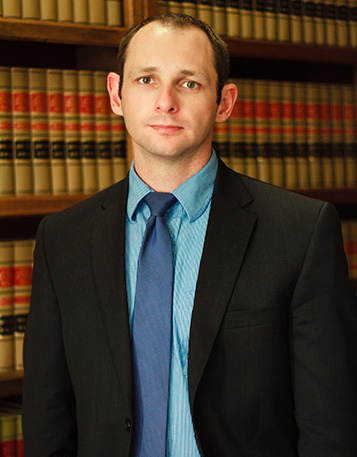
Contact James Today
SAFP Texas Substance Abuse Felony Punishment Facility
Overview of SAFP
What does SAFP stand for? Pronounced “SAFE P,” the Texas Substance Abuse Felony Punishment Facility (SAFPF) is a part of the state’s Substance Abuse Treatment Program (SATP) run by the Rehabilitation Programs Division of the Texas Department of Criminal Justice (TDCJ). This is a program the government has designed to give drug abuse treatment inside, and later, outside Texas prisons. The program is supposed to provide different treatment options for the needs of individuals suffering from substance abuse addiction. Overall, the idea is that by giving people treatment, Texas will not have the same people committing crimes over and over again (recidivism - see below). The progam is only available for felony charges. If your considering a plea bargain offer that includes agreeing to go to SAFP, then you need to speak with a criminal defense attorney for a complete understanding of the program.
Meet with attorney James Luster to discuss SAFP...
SAFP information on this page:
- Texas Law Creating SAFP
- TDCJ Program Overview
- Phases of the Program
- SAFPF Locations in Texas
- Success Rate of the Program
- Getting Back Time Credit for SAFP
Aside from getting sentenced to SAFP, anyone that is sentenced to the TDCJ (Institutional Division or State Jail) is put through a chemical dependency screening. All Texas prisons offer some form of drug addiction treatment, like: Alcoholics Anonymous, Narcotics Anonymous, Co-Dependents Anonymous, and other approved programs are available to all offenders, and volunteers are used to improve the twelve-step and group recovery meetings. SAFP is a common part of plea bargains or probatoin sentences in Texas drugs charges.
“Recidivism” is the re-incarceration of offenders after they have been released from jail or prison. The recidivism rates and statistics shown in this guide are based on a 2015 report by the TDCJ for offenders who were released in the Fiscal Year 2011. The releases were tracked to determine if they returned to either TDCJ prison or state jail for either a new conviction or community supervision (probation or parole) violation.
Texas Law Creating SAFP
The Texas Government Code § 493.009 gives the Texas prison system (TDCJ), working with the Texas Department of State Health Services, the power to create SAFP. These government agencies came up with criteria for deciding whether prisoners are required to take part in different SAFP programs. The system is supposed to have rewards and sanctions (punishments) to encourage participation. However, if someone is sentenced to SAFP by the judge, then that person does not get the same rewards (i.e. good conduct time).
People often get SAFP as a condition of probation. TDCJ has rules for these probationers. If one of these probationer inmates violates the rules, then the sentencing court gets the case back and the judge may (likely will) revoke the probation. Like probation SAFP, some people are required to be in program as a part of parole. There are rules for these parolees. If the rules are violated, the Pardons and Paroles Division will issues warrant for the person and possibly revoke the person’s parole.
TDCJ employs people or contracts with people that are considered “qualified professional” in the area of addiction treatment. These different professionals include by law:
- is a licensed chemical dependency counselor;
- is a licensed social worker with at least two years of experience in chemical dependency counseling; or
- is a licensed professional counselor, physician, or psychologist with at least two years of chemical dependency counseling experience.
If someone has the money to pay for the treatment they get in SAFP, then TDCJ is supposed to try to get the person to pay for it. If someone has insurance that covers any part of substance abuse treatment, then TDCJ is supposed to try to get the insurance company to pay as much of the cost of treatment as possible. Starting on January 1, 2017, Article 42A.303 of the Texas Code of Criminal Procedure says that if a judge puts someone on community supervision (probation) as an alternative to going to prison, then the judge is supposed to also make that person pay a fee for the residential aftercare part of the program in an amount decided by the judge. The judge is not supposed to make that fee more than 25% of the person’s gross income while participating in the program, and the judge cannot make the person pay the fee at any time other than when the person is both employed and a participant in residential aftercare.
TDCJ Program Overview
People are in the SAFPF because they are either on probation or parole, and those people are completing the program as an alternative to regular incarceration. A district judge (felony court) can sentence someone to the program as a condition or a modification (change) of probation, and the Board of Pardons and Paroles may place a someone in the program as a modification of parole after a parole violation occurred. Successful completion of the program is a condition of the offender remaining on community supervision.
How long is SAFP? SAFP is a six-month, in-prison therapeutic community treatment program followed by a period of “aftercare.” A version of the program for “special needs” offenders lasts nine months, followed by aftercare. This special needs SAFP is meant to help with mental disorders, personality disorders, medication regimentation, and the interaction of disorders with substance abuse.
How many hours of treatment per day? A person in SAFP can expect to be involved in about four hours of treatment per day and four hours of education classes or work per day while incarcerated. Regular needs participants will be scheduled to work no less than four but no more than six hours per day. Special needs offenders will not be scheduled to work more than four hours per day.
Tarrant County has a specialized drug court for SAFPF graduates during Phases Two and Three. Participants report every two weeks to meet with a judge and community supervision officer to discuss their progress. The program has incentives and sanctions for performance.
[Back to Top]Phases of SAFP
- Phase 1: Orientation (Average – 30 days) – Learning the basic rules and language of the Therapeutic Community.
- Phase 2: Main Treatment (Average – 90 days) – Maintain respect for the individual while aggressively confronting the offender's addiction, drug seeking behavior, and thinking errors. Strengthen the offender’s:
- Decision-making skills;
- Capacity for self-management;
- Skills in relapse prevention;
- Transitional planning.
- Phase 3: Re-Entry (Average – 60 days) – Practice relapse prevention and pro-social problem solving techniques
- Aftercare: Upon release from the in-prison program, offenders must complete three months in a Transitional Treatment Center (TTC), six to nine months of outpatient care, and up to twelve months of support groups and follow-ups. The aftercare component encompasses a broad range of residential, therapeutic, outpatient, and resource programs.
- A TTC is a halfway house that specializes in treatment as a part of the continuum of care
- Recently, the program began to offer an alternative to the three month stay in the TTC. If the offender meets strict eligibility criteria, they may be released on parole or probation and go to an approved home plan. They are allowed to live at home and report to a facility that is contracted by the TDCJ, but they are required to complete the same amount of hours as an offender who lives at the Transitional Treatment Center. After completion of the three months, the offender moves to the next phase of care, outpatient care, just as if they had been in the TTC.
- Relapse: Applies to offenders who have relapsed and returned to the program. This phase aims to provide intensive treatment that addresses specific, individual relapse issues.
- Return offenders are placed in Phase 1 for no longer than fifteen days in order to complete a relapse evaluation.
- Entire relapse phase is no longer than four months for regular needs offenders and five to six months for offenders with special needs.
Requirements
- Sentenced by judge as a condition of community supervision or as a modification of parole / community supervision
- Offenders must be chemically dependent as shown by an accepted substance abuse screening instrument
- Offenders charged or convicted of a felony or attempted felony of Indecency with a Child (TPC § 21.11), Sexual Assault (TPC § 22.011), or Aggravated Sexual Assault (TPC § 22.021) are not eligible
- Click link for full eligibility requirements for CSCD (Probation) offenders
- Click link for full eligibility requirements for Parole Eligible / Parole Modification offenders
Facility Locations
(As of 2015, there were approximately 3,558 total beds available):
- Glossbrenner, San Diego, Texas – Male
- East Texas Treatment Unit, Henderson, Texas – Special Needs/Male
- Johnston Unit, Winnsboro, Texas – Male
- Sayle Unit, Breckenridge, Texas
- Halbert Unit, Burnet, Texas – Female
- Henley Unit, Dayton, Texas – Special Needs/Female
- Hackberry Unit, Gatesville, Texas – Special Needs/Female
- Jester I Unit, Richmond, Texas – Special Needs/Male
- Estelle Unit, Huntsville, Texas – Special Needs/Male
SAFP Success Rate Statistics
In 2011, 5,989 offenders completed the incarceration portion of the SAFPF program and entered aftercare. 2,314 (38.7%) offenders successfully completed the aftercare treatment determined by their treatment team. After three years, the recidivism rate for offenders who successfully completed the program stood at 20.53%. In comparison, 902 parole and probation releases that did not complete the program, but shared characteristics with those that did, had a recidivism rate of 37.92% after three years. Thus, there is a difference in the recidivism rate between the two groups of about 17.39%. The SAFP showed the greatest reduction in recidivism out of all the programs.
Credit for time in SAFP if probation is revoked
You get your back time credit for SAFP if you successfully complete the program. So, if you get sent to SAFP on probation (or deferred adjudication), then get revoked, you get your SAFP time credited to your sentence if you were successfully complete the treatment program. This can be a lot of back time. Discuss how to calculate your credit with your criminal defense lawyer. The answer to this question is located in the Texas Code of Criminal Procedure Article 42.03.
Sometimes there is a disagreement about whether a person “successfully completed” the SAFP program. Prosecutors or judges may think because a person did not complete the aftercare program that the judge does not have to give back time credit for SAFP. However, the law says a person gets credit if the “defendant successfully completes the treatment program at that facility.”
The wording of the law only makes sense if “the treatment program” means the actual lockdown SAFP, because the aftercare or continuum of care program is not “at [the SAFP] facility.” A person’s successful completion of treatment at a Substance Abuse Felony Punishment Facility (SAFPF), as ordered by the court as a condition of community supervision (probation), entitles the person to credit against their sentence following revocation of probation for the time served there. This is even if the person was later unsuccessfully discharged from the continuum of care treatment program. SAFP is a “stand alone” program that requires completion before a participant moves on to aftercare.
Talk to your criminal defense attorney about your time credit for SAFP. These Texas appeals court cases are a good source for trying to get your backtime:
- Burke v. State, 2010 WL 3431675 (Tex. App.-Austin 2010); and
- Woodard v. State, 2011 WL 2732669 (Tex. App.-Corpus Christi 2011).



